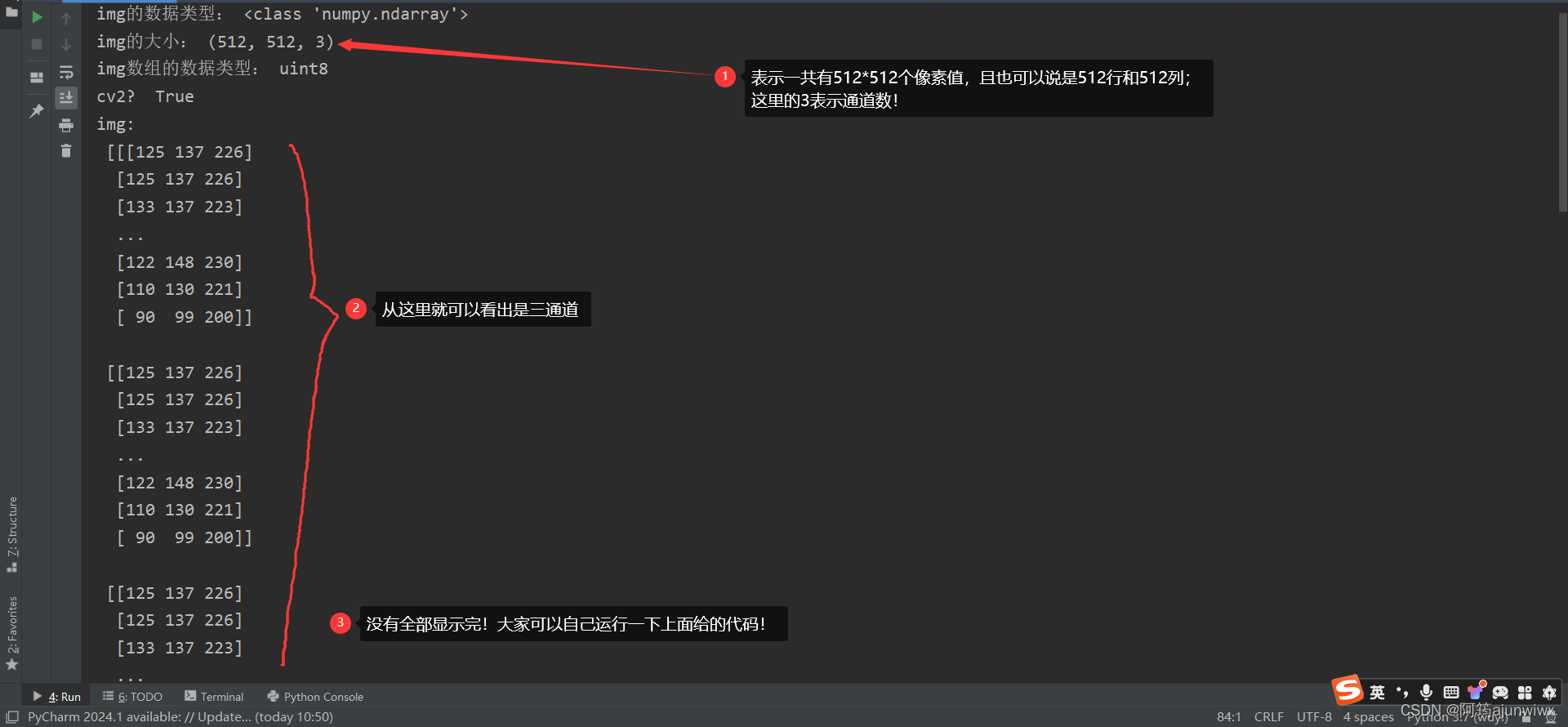前言
记录一下小白生涯
1. type()函数:获取变量的数据类型
2. np.dtype()函数:获取数组的数据类型
3. np.astype()函数:转换numpy数组的数据类型
4. isinstance()函数:判断 变量(数组)的类型
isinstance()函数有两个参数:第一个是待确定类型的数据;第二个是指定一个数据类型。
根据两个参数返回一个为布尔类型的值,True表示类型一致,False表示类型不一致。
5. np.shape()函数:一般用于读取数组的行、列、通道数
np.shape[0]:为第一维度的长度(行)
np.shape[1]:为第二维度的长度(列)
np.shape[1]:为第二维度的长度(通道数)
6. 代码和现实结果
6.1 代码
import cv2
import numpy as np
img = cv2.imread('E:/Desktop/lenna.png') # 读取图片路径(不能有中文!)
print('img的数据类型:', type(img))
print('img的大小:', img.shape)
print('img数组的数据类型:', img.dtype)
print("cv2? ", isinstance(img, np.ndarray))
print('img:\n', img)
gray = img.mean(axis=-1) # 平均值灰度化
print('gray的数据类型:', type(img))
print('gray的大小:', gray.shape)
print('gray数组的数据类型:', gray.dtype)
print("cv2? ", isinstance(gray, np.ndarray))
print('gray:\n', gray)
gray = gray.astype(np.uint8) # 转换数据类型为unint(0-255)显示图像
print('gray(转化为uint8):\n', gray)
cv2.imshow('img', img)
cv2.imshow('gray', gray)
cv2.waitKey(0)
cv2.destroyAllWindows()
6.2 cv2.imshow打印出来的结果

6.3 print打印出来的结果分析


7. Numpy数组的数据类型范围






















 2293
2293











 被折叠的 条评论
为什么被折叠?
被折叠的 条评论
为什么被折叠?








